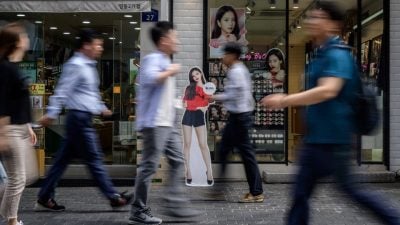
While Malaysia’s tourism sector is said to be in dire shape, some interesting trends have not been noted.
Our country still received four million visitors last year, which is surprising, given the outbreak of COVID-19 starting from the end of 2019.
This figure can only rise now that vaccines are being distributed, both in Malaysia and abroad.
Before the COVID-19 pandemic, tourism was the third most significant contributor to Malaysia’s GDP after manufacturing and commodities. Unfortunately, due to the pandemic, 2020 did not go as planned.
To stem the spread of the virus, the Malaysian government implemented several Movement Control Orders (MCO).
Visit Malaysia Year 2020 was cancelled, as the implementation of the MCOs closed the country’s borders and restricted non-essential travels.
Although the initial restrictions were subsequently relaxed, our borders remain closed to foreign visitors while Malaysians cannot leave the country. The level of economic distress due to the pandemic has been severe, and particularly its damage to the tourism industry has been drastic.
In the latest report published by the UNWTO, Malaysia registered a total of 4,332,722 international tourist arrivals and RM12.69 billion in tourist receipts during 2020, both numbers showing massive contractions of 83.4% and 85.3% respectively compared to the previous year.
Besides, as reported by the Department of Statistics Malaysia (DOSM), the travel sub-sector recorded a deficit, totalling RM7.8 billion, for the first time in 30 years.
Revenue in the accommodation sub-sector registered a negative growth level of 53.3%, and the decrease in air passengers also led to the increase of an RM1.6 billion deficit in the transport sub-sector for the year 2020.
Although tourism industry players can utilise available incentives and assistance packages such as Prihatin, Prihatin SMEs and Penjana Tourism Financing Scheme to try to keep their businesses afloat, many have been forced to cease their operations as the assistance packages have not been sufficient to cover their basic operating expenses such as wages and rents.
According to the data released by the Companies Commission of Malaysia and the Malaysian Association of Hotels (MAH), more than 200 tourism-related companies have folded their businesses since the first MCO was introduced, and around 6% of total hotel sector staff have been laid off.
Besides, three major airlines–Malaysia Airlines, AirAsia and Malindo Air have been forced to scale down their operations, implement salary cuts, introduce unpaid leave and implement retrenchment to keep their businesses afloat.
Notably, Malindo Air laid off 2,200 employees, AirAsia Group trimmed 10% of its existing workforce, while the Malaysia Aviation Group has offered an early retirement scheme to 50% of its employees.
While many industry players are pleading for targeted financial assistance, other experts have suggested that industry players should be more innovative and “think outside the box”.
Although targeted financial assistance would be helpful, it would significantly impact the current level of direct federal government debt which stood at RM879.56 billion at the end of 2020.
On the other hand, suggestions such as offering home-delivered meals, selling airline tableware and amenity kits, or opening pop-up restaurants serving inflight food may generate revenue, they would never be enough to sustain tourism player’s businesses.
For instance, 109 entities in the hotel sector including hotels, resorts, motels, homestays and chalets folded their operations.
Singapore Airlines laid off approximately 20% of its workforce even though their new business models such as “lunch on a stationary Airbus A380” were well received, and the tickets were snapped up in less than 30 minutes on the day they launched the concept.
Similarly, Thai Airways International recently announced that it would cut its operations significantly by shedding 50 per cent of its workforce, despite its pop-up restaurant concept selling inflight meals being a success.
These outcomes suggest that “thinking outside the box” or innovation are insufficient to heal the tourism industry’s current wounds.
Meanwhile the country remains closed to foreign visitors, and easy interstate travel is still not possible for domestic travellers.
While it is true that SMEs, in particular, are faring badly during the crisis caused by the pandemic, what lessons can be learned in terms of how to employ the incentives by the government more prudently and productively as resources are limited.
As reported by DOSM, the income generated by Malaysia’s tourism accommodation sub-sector increased from RM507 million (2nd quarter of 2020) to RM1,176 million (3rd quarter of 2020), while the food and beverage sub-sector increased its income from RM6,641 million (2nd quarter of 2020) to RM7,602 million (3rd quarter of 2020) after the interstate travel ban was lifted from June 10 last year.
This indicates that while counting on vaccines may end the prevalence of the COVID-19 pandemic, policymakers should also consider the following suggestion to save our tourism industry:
1. Allow domestic tourism to resume freely with appropriate SOPs;
2. Issue special tourist visas for long-term foreign visitors from low-risk countries according to the standardised Ministry of Health and Ministry of Home Affairs regulations;
3. Implement travel bubbles with major regional business and tourist destinations which have controlled the spread of COVID-19 well (e.g. Singapore, Thailand and Vietnam);
4. Consider opening local land borders with Thailand, Singapore, Brunei and Indonesia on Borneo to stimulate border regions.
(Goh Lim Thye is Senior Lecturer at the Faculty of Economics and Administration, Universiti Malaya.)
ADVERTISEMENT
ADVERTISEMENT







































